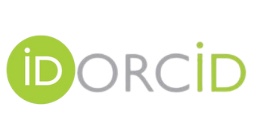Importance of the plane approach in the diagnosis of facial deformity. Case report
Keywords:
facial deformity, facial sequel, facial radilogyAbstract
Facial deformities are perceptible metric disorders in the proportion or facial symmetry that can be measurable, it can make the radiological planes, a necessary auxiliary diagnostic test. The case of a 32-year-old female patient with the diagnosis of facial deformities because of facial asymmetry due to enlargement of the right lateral region, without functional disorders was presented with the objective to reinforce the importance of the plane approach in this diagnosis. By the radiological diagnosis it was verified that there were disorders, which are expressed only in the bone tissue. A shortening of the cigomatic arch of 8.5 mm in the horizontal plane, and in this plane also, a lateral displacement of 5 mm at the level of the front molar suture without vertical significant displacement. The analysis of the radiological vertical and horizontal planes in patients, minimizes the possibilities of mistakes y and allows the getting of precise measures and individualization of the treatment plan.Downloads
References
Blanco Moredo E, Dunán Mesa LY, Pérez Ferrer MS. Lipotransferencia: una alternativa para el tratamiento de la deformidad facial adquirida. Rev Inf Cient [Internet]. 2020 [citado 24 Oct 2021];99(1):63-70. Disponible en: http://www.revinfcientifica.sld.cu/index.php/ric/article/view/2699
Ravelo V, de Moraes M, Olate S. Relación Transversal, Vertical y Sagital en Sujetos con Deformidad Facial Candidatos a Cirugía Ortognática. Int. J. Odontostomat [Internet]. 2020 [citado 24 Oct 2021];14(4):664-9. Disponible en: http://www.scielo.cl/scielo.php?script=sci_arttext&pid=S0718-381X2020000400664&lng=es.
Moore KL, Dalliy AF, Agur AM. Anatomía con orientación clínica. 8ed. Philadelphia: Wolters Kluwer; 2017.
Sotelo Chávez AG. Aplicaciones del colgajo coronal en traumatología maxilofacial Hospital Militar Central [Tesis]. Lima, Perú: Universidad Nacional Mayor de San Marcos; 2004 [citado 24 Oct 2021]. Disponible en: https://sisbib.unmsm.edu.pe/bibvirtualdata/Tesis/Salud/sotelo_cha/sotelo_cha.pdf
Richardson D, Jones DC. Capítulo 24 Osteotomías secundarias e injertos oseos. En: Fernández Alba J. Traumatismos maxilofaciales y reconstrucción facial. Madrid: Ed. Elsevier; 2005.
Blanco Moredo E, Valdés Collazo C, Domínguez Sánchez Y, Pereira Dávalos CI, Dunán Mesa LY. Caracterización de pacientes con deformidades faciales. Rev Cub Med Mil [Internet]. 2021 [citado 9 Oct 2021];50(2):e1377. Disponible en: http://scielo.sld.cu/scielo.php?script=sci_arttext&pid=S0138-65572021000200022&lng=es.
Vergara Schifferli IA. Estudio descriptivo de secuelas asociadas a fracturas orbitarias y orbitocigomáticas tratadas quirúrgicamente en pacientes operados en el Hospital San José entre los años 2008 y 2017 [Tesis]. Santiago: Universidad de Chile; 2019 [citado 24 Oct 2021]. Disponible en: http://repositorio.uchile.cl/handle/2250/173411
Morales Navarro D. Fracturas del tercio medio facial. Rev Cubana Estomatol [Internet]. 2018 [citado 9 Oct 2021];55(1):42-58. Disponible en: http://scielo.sld.cu/scielo.php?script=sci_arttext&pid=S0034-75072018000100006&lng=es.
Mardones M Marcelo, Bravo A Rodrigo, Fernández T María de los Ángeles, Gunckel M Renato, Torres M Coral. Sistemática en el tratamiento quirúrgico de las fracturas panfaciales aplicado a un caso clínico de alta complejidad. Int. J. Odontostomat [Internet]. 2020 [citado 9 Oct 2021];14(4):590-5. Disponible en: http://www.scielo.cl/scielo.php?script=sci_arttext&pid=S0718-381X2020000400590&lng=es.
Guercio Mónaco E, De Stefano A, Hernández A, Galluccio G, Di Natale R, Peñuela A. Protocolo tomográfico para la evaluación de la asimetría mandibular. Revisión de la literatura. ODOUS CIENTÍFICA [Internet]. 2019 [citado 9 Oct 2021];20(2):165-79. Disponible en: http://servicio.bc.uc.edu.ve/odontologia/revista/vol20n2/art07.pdf
Downloads
Published
How to Cite
Issue
Section
License
Medimay protects copyright from the very first moment the submission is made, but upon publication it assumes a Creative Commons 4.0 (cc-by-nc) license, which allows the use of the work to share (copy and redistribute the material in any medium or format) and adapt (remix, transform and build from the material) as long as exclusive mention is made of the publication in the journal as a primary source, prohibiting its commercialization. The author always retains his/her right.















 This site is licensed under a
This site is licensed under a